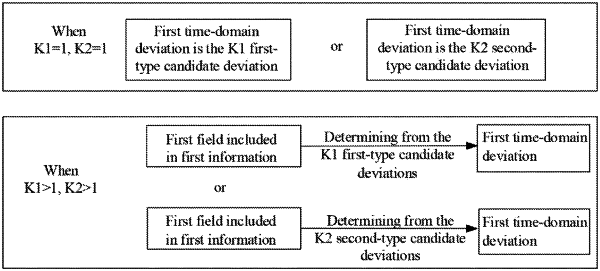| CPC H04W 72/0446 (2013.01) | 20 Claims |

|
1. A method in a User Equipment (UE) for wireless communication, comprising:
receiving a first signaling;
receiving a first radio signal in a first time window; and
transmitting a feedback on the first radio signal in a second time window;
wherein the first signaling is a physical layer signaling, the first signaling is used for determining time-domain resources occupied by the first radio signal; a first time-domain deviation is a deviation in time domain between the second time window and the first time window; when the first signaling carries a first identifier, the first time-domain deviation is one of K1 first-type candidate deviation(s), and K1 is a positive integer; when the first signaling carries a second identifier, the first time-domain deviation is one of K2 second-type candidate deviation(s), and K2 is a positive integer; the first identifier is different from the second identifier, and at least one of the K2 second-type candidate deviation(s) is different from all of the K1 first-type candidate deviation(s); the first identifier and the second identifier are two different non-negative integers respectively;
the K1 is equal to 1, the K2 is equal to 1, the first time-domain deviation is the K1 first-type candidate deviation or the K2 second-type candidate deviation; or, the K1 is greater than 1, the K2 is greater than 1, the first signaling carries first information, the first information comprises a first field, the first field comprised in the first information is used for determining the first time-domain deviation from the K1 first-type candidate deviations or the K2 second-type candidate deviations.
|